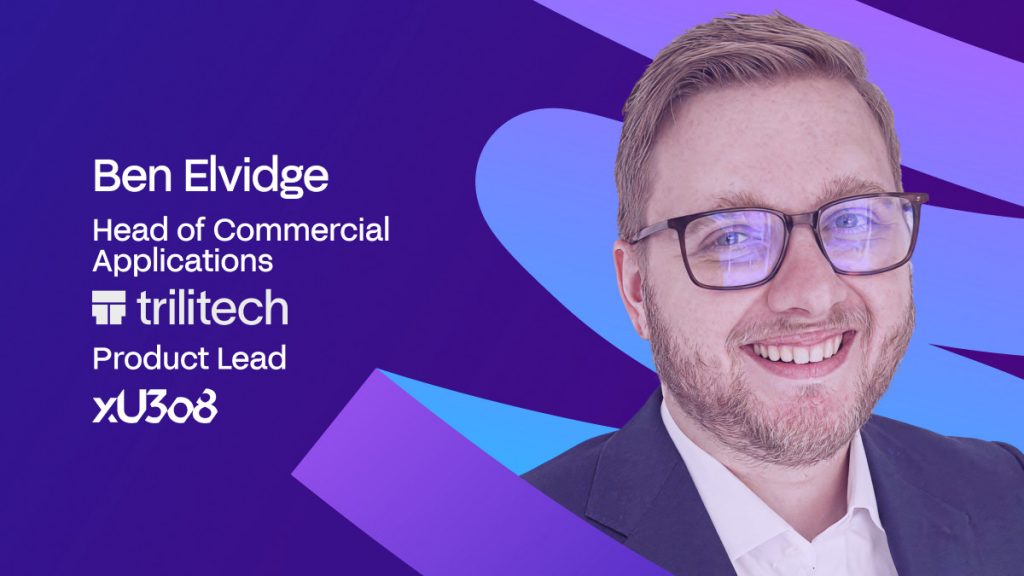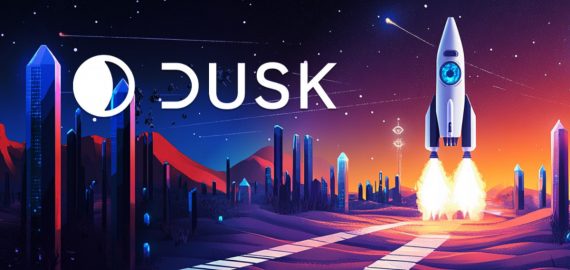The Future of RWA Lies in Uranium.io and Tezos Innovation


In Brief
Uranium.io and Tezos are redefining the future of Real-World Asset tokenization by bridging blockchain innovation with real-world commodity markets.

Ben Elvidge, Head of Commercial Applications at Trilitech and Product Lead for Uranium.io, has been at the forefront of bringing blockchain technology into real-world commercial use cases. With deep experience in product development and decentralized applications, he focuses on creating practical solutions that bridge Web3 innovation with enterprise needs.
Could you please share your personal journey to Web3?
My background is predominantly TradFi – I spent a long stint at Morgan Stanley in investment management and was a consultant for financial institutions. After that, I was Chief Product Officer at an AI-powered fintech for three years. In early 2024, I came across the uranium project through someone in my network and was just super excited about it.
The opportunity to use blockchain technology to solve real market inefficiencies and democratize access to an asset class that was previously exclusive to institutions with millions of dollars really drew me in. It really seemed to be about delivering on the early promise of blockchain technology. I leaped to join Trilitech full-time to push this forward. It’s been almost a year since I joined full-time, and we launched uranium.io in December.
What role do you see Etherlink playing in scaling xU3O8 (Uranium.io) in the coming years?
Etherlink has been phenomenal for what we want to do. As the EVM-compatibility layer for Tezos, it gives us sub-second block times and very low gas fees, which are crucial for any financial product. These fast transaction times enable us to attract more liquidity and provide real-time pricing for this critical asset, which are table stakes in traditional financial markets.
The scalability and low costs are essential as we aim to become the primary venue or mechanism for spot uranium trading. The robustness and on-chain governance from the Tezos ecosystem have transferred over to Etherlink, providing the solid foundation we need for a commodity trading platform.
Uranium.io positions itself as a key commercial application on Etherlink — can you tell us what it is and the problem it aims to solve?
In short, uranium.io is a blockchain-based platform that enables anyone to buy physical uranium. The problem we’re solving is that uranium typically trades OTC in clip sizes worth millions ($7.6m at today’s price) with 100,000-pound (lbs) minimum lots.
You need a converter account that costs about $20k annually to maintain, and the market is opaque with minimal price discovery, well, until we launched the world’s first uranium price feed. We’ve made it possible for someone to buy uranium for a few dollars, instead of millions. It’s about broadening access to an asset that’s critical for meeting energy demands and security but has been locked away from all but the largest institutional players.
Uranium.io is a striking example of RWA tokenization. Why do you think Uranium is such a compelling starting point?
Several factors make uranium perfect for tokenization. First, it’s outperformed the S&P 500 over the past five years and has almost no correlation with traditional assets like Bitcoin, gold, or equities, making it excellent for portfolio diversification. Second, unlike other RWAs, it’s quite aligned with the Web3 audience; talking to someone (who isn’t an institution or fund) about holding uranium is much more interesting than treasury bills!
Third, the macro tailwinds are incredibly strong, with AI driving energy demands and companies like Microsoft investing billions in nuclear power. Finally, uranium is fungible and has standardized storage at just three facilities globally, which makes the tokenization structure much cleaner than trying to fractionalize real estate or racehorses.
What are some of the challenges/hurdles in bringing an RWA to market? How did you overcome these with xU3O8 and uranium.io?
The project was already two years in the making before I joined because of the complexity. The biggest challenges were legal and regulatory; we spent enormous time developing within the English common law trust framework that enables token holders to have beneficial ownership without creating a security structure. Physical logistics were another hurdle; uranium can only be stored at three converters globally, and we had to align processes with partners like Curzon Uranium and Archax (who are FCA regulated).
We also had to implement robust compliance measures, including on-chain analytics and selective KYC, to ensure sanctioned entities couldn’t access the tokens. The key was meticulous coordination across the entire ecosystem and working with established, regulated partners.
What role do you see RWA tokenization playing in the future of global finance? How is Tezos positioned to lead in this area?
I believe successful RWA implementations must go beyond simply putting traditional assets on-chain. The true innovation comes from using blockchain to reshape market structures that have remained unchanged for decades. We’re creating platforms that provide real utility by solving genuine market problems such as inefficiencies in access, transparency, and liquidity.
The Tezos ecosystem, with Etherlink’s low costs and fast finality, is perfectly positioned for this. The focus should be on bringing previously inaccessible asset classes to individual investors through thoughtful tokenization models that create genuine bridges between blockchain technology and traditional finance.
Some argue that RWAs face regulatory and custodial risks. How do you see those challenges?
These are real concerns that we’ve addressed head-on. From a regulatory perspective, commodity trading isn’t regulated just because we put it on-chain. Our framework avoids creating securities while maintaining clear beneficial ownership rights. For custody, we leverage the existing secure storage infrastructure; uranium must be stored at regulated converters, in our case, in Cameco in Canada, which actually works in our favor as it creates natural barriers against misuse.
Beyond Uranium, what other RWAs are best suited for tokenization in the near term?
We’re looking at other metals that share similar characteristics; they trade OTC, lack liquid venues, and have high barriers to entry. Lithium and cobalt are particularly interesting as they’re crucial for EVs and smartphones, but face the same market inefficiencies. The blueprint we’ve created for uranium can apply to these transition metals.
Any commodity with significant barriers to entry, standardized storage, and importance to future technology is a strong candidate. The key is finding assets where tokenization actually solves real market problems rather than tokenizing for its own sake.
Looking at today’s market, do you think the crypto industry is finally maturing, or are we still in an experimental phase?
I think we’re in a transition period. What excites me is seeing blockchain used as infrastructure to improve existing markets rather than trying to replace everything. The fact that we’re having conversations with hedge funds, family offices, and neo-banks shows this evolution. However, we still face challenges like making onboarding as seamless as e-commerce. So while we’re definitely maturing, there’s still work to do to bridge Web3 innovation with mainstream adoption.
What’s next for xU3O8 and uranium.io?
Short term, it’s about education and expanding access. We launched on three centralized exchanges, Gate, KuCoin, and MEXC, but we’re working on integrations with more traditional investment platforms. We’re streamlining the onboarding process to make it as simple as possible, ideally achieving that Amazon-like experience where you can buy with just a few clicks.
Longer term, our ambition is to become the primary liquid venue for uranium trading globally, potentially expanding our blueprint to other critical metals. We’re also exploring other products where uranium tokens could serve as collateral (launching the DeFi version of this imminently), and working with participants in the nuclear supply chain who see this as a way to manage risk and lock in prices. Ultimately, it’s about continuing to bridge that gap between Web3 innovation and real-world utility.
Disclaimer
In line with the Trust Project guidelines, please note that the information provided on this page is not intended to be and should not be interpreted as legal, tax, investment, financial, or any other form of advice. It is important to only invest what you can afford to lose and to seek independent financial advice if you have any doubts. For further information, we suggest referring to the terms and conditions as well as the help and support pages provided by the issuer or advertiser. MetaversePost is committed to accurate, unbiased reporting, but market conditions are subject to change without notice.
About The Author
Victoria is a writer on a variety of technology topics including Web3.0, AI and cryptocurrencies. Her extensive experience allows her to write insightful articles for the wider audience.
More articles

Victoria is a writer on a variety of technology topics including Web3.0, AI and cryptocurrencies. Her extensive experience allows her to write insightful articles for the wider audience.

















































